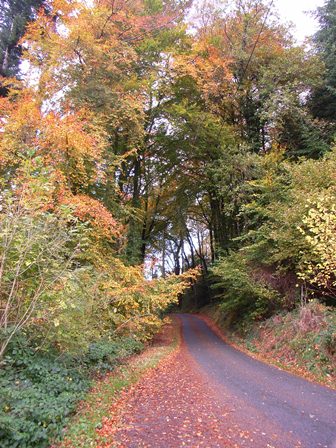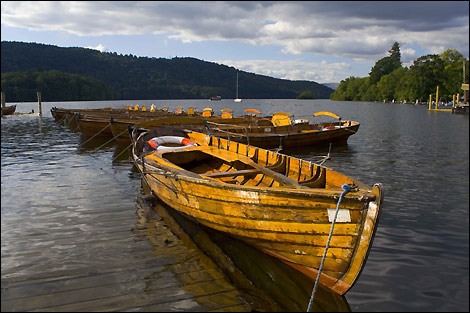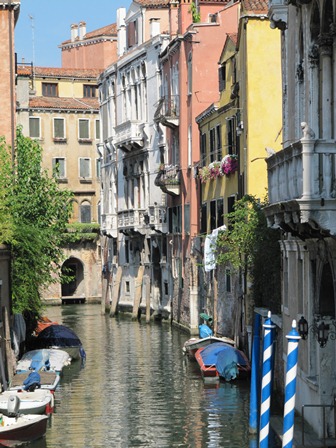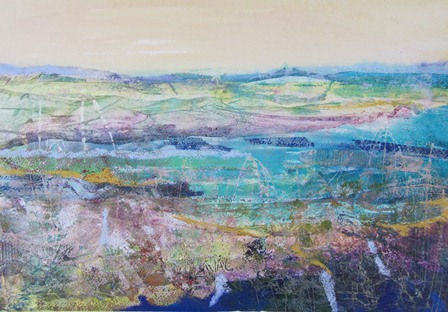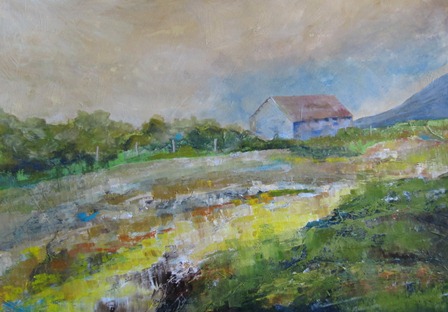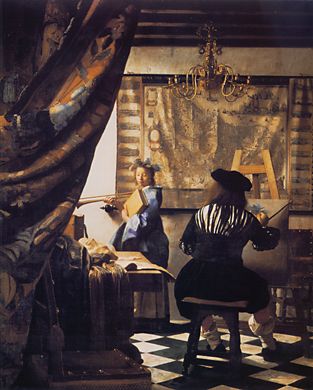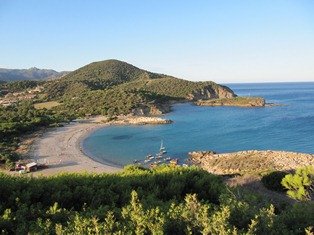|
|
Guiding the Eye'Guiding the eye' of the viewer or helping them to 'read the painting' is a challenging 'rule' (skill) to understand and put into action. It is a little complex to explain but through the shapes, colours and tones the viewer is led on a journey through the painting. Natural Routes Through a Painting
The road leads the viewers eye into the painting and to 'the area of interest'. In this case the dark tree trunks against the bright sunlight. A stream, river or path can all have the same effect.
Can you see in the photo above how the mooring rope leads you into the picture and into the area of interest?
In this photo the photographer has used the mooring posts and shadows in the water to lead the viewers eye into the picture; into the area of interest .... the complex, fascinating Venetian buildings.
Creating a Route Through a Painting
This interesting and subtle painting has no natural lead in or pathway for the viewer to follow. However in its creation the suggestion of posts or trunks at the bottom of it is guiding the eye into the landscape and then the pale yellow leads the viewer on.
The whole sweep of this cornfield takes you into the painting, the use of yellow leads the eye onwards. So why has the artist use the turquoise colour? Well, it's use is as a complementary colour and highlights areas of the painting. It makes the viewer refocus on these parts and helps the viewers eye look carefully at different parts of the picture. Also the edge of the mountain 'Black Combe' brings the viewers attention to the area of interest ... the barn. Learning from 'The Masters'
In this fascinating painting 'Art of Painting' by Jan Vermeer, can you see the fabulous dark shadow line going from the bottom of painting straight to where the model is seated? The sweep of the curtain on the left hand side is another route into the painting. See how the bottom of the window frame starts just at the edge of painting on the right and although broken by the artist leads to the model also.
I love this view but there is no route!
In the photograph above there is no route into or around the picture. Nothing is guiding the eye. The viewer's eyes dart around to the cove, buildings, the hillside but are probably drawn back time after time to the dark and interesting shadow shapes in the foreground. Can you use this photograph and create a good painting? I feel the answer is yes ... the artist would need to manipulate the plants, shadow and tones in the forground to lead the viewers eye into the painting and then use the sweep of the bay to take the viewer into the top third of the picture. Which is where the area of interest would be ... the fascinating cliffs and coast line. Feeling overwhelmed about the guiding the eye rule? Then what about an on-line tutorial? |
